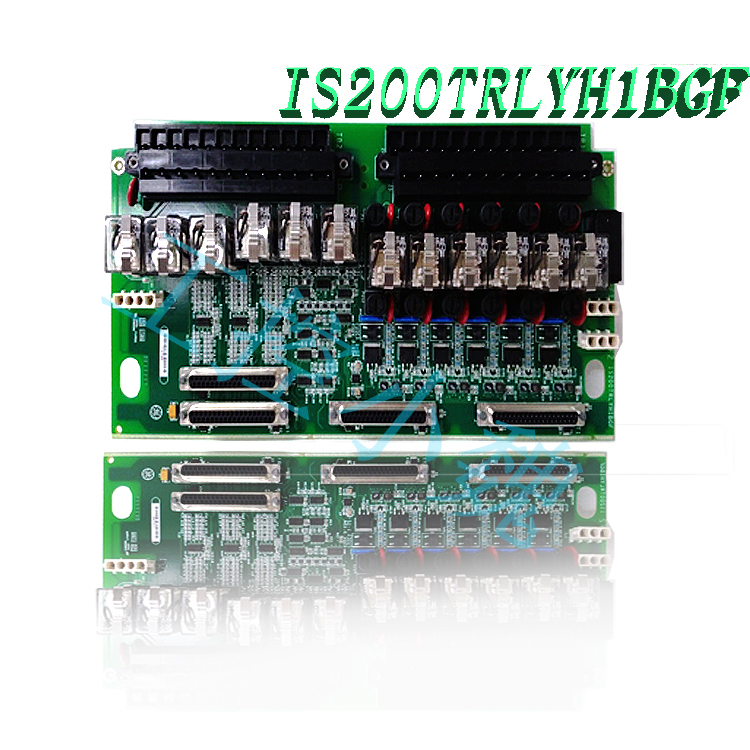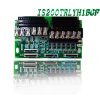Description
IS200TRLYH1D – Relay Output with Coil Sensing Terminal Board is available in stock which ships the same day.
IS200TRLYH1D – Relay Output with Coil Sensing Terminal Board comes in UNUSED as well as REBUILT condition.
To avail our best deals for IS200TRLYH1D – Relay Output with Coil Sensing Terminal Board, contact us and we will get back to you within 24 hours.
IS200TRLYH1D Other names:
Switch IS200TRLYH1D
Control system module IS200TRLYH1D
Editable controller IS200TRLYH1D
Product Description
The IS200TRLYH1D is a board (PCB) manufactured by GE for the Mark VI system. Designed for speed control during startup, the MKVI is one of the last “Speedtronic” systems released by GE. The Mark VI offers turbine load control during normal operation and protection against turbine overspeed in situations where there is a loss of load. The MKVI also offers automatic generator synchronization. The system is designed to manage both large turbine applications and small ones and can be designed either as a TMR (triple modular redundant) system or in Simplex form.
The IS200TRLYH1D functions as a Relay Output terminal board with Solenoid Integrity Sensing. This board has six plug-in magnetic relays. These circuits are Form-C contact outputs that are fused and powered to drive external solenoids. Bad solenoids can be detected through special feedback provided on each relay circuit.
.jpg)
The IS200TRLYH1D is populated by a large terminal board with 24 screw connections and a small terminal board with four screw connections. The board has twelve fuses, and six relays (previously mentioned.) There are four connectors, marked as JA1, JR1, JS1, and JT1. The board uses the JA1 connector for simplex applications and the JR1 through JT1 connectors for TMR applications. There are also three plug connectors on the board surface. The IS200TRLYH1D is populated by a metal oxide varistor and a clamp diode for transient suppression.
FUNCTIONAL DESCRIPTION:
IS200TRLYH1D is a Relay Output with Coil Sensing Terminal Board manufactured and designed by General Electric as part of the Mark VIe Series used in GE Distributed Control Systems. The Relay Output with coil sensing (TRLYH1B) terminal board holds 12 plug-in magnetic relays. The first six relay circuits are configured by jumpers for either dry, Form-C contact outputs, or to drive external solenoids. A standard 125 V DC or 115/230 V AC source, or an optional 24 V DC source with individual jumper selectable fuses and on-board suppression, can be provided for field solenoid power. The next five relays (7-11) are unpowered isolated Form-C contacts. Output 12 is an isolated Form-C contact, used for special applications such as ignition transformers. The coil-sensing terminal board usually facilitates the connection of wires or terminals for the relay’s coil. It allows the relay to sense the status of the coil, which can be crucial for monitoring or controlling electrical circuits in various applications.
Relay: This is the primary component that enables the control of one electrical circuit by opening and closing contacts in another circuit. It typically consists of a coil (that requires a certain voltage to actuate) and one or more sets of contacts.
Output Contacts: These are the switch contacts within the relay that change their state (open or closed) when the coil is energized or de-energized. These contacts are used to control other devices or circuits.
Coil Sensing Terminal Board: This board provides connection points or terminals for the wires that power the relay coil. Additionally, it might have other terminals for sensing the state or voltage across the coil to monitor its status.
All products on this website are special products, and market prices have been fluctuating,
The specific customer service quotation shall prevail, as the product is a new one and the traps are not real,
Please confirm the model, product, price, and other detailed information with customer service before placing an order. The website has been used,
New for sale, please contact the website( https://www.weikunfadacai1.com/ )Customer service communication.
Popular model recommendations:



.jpg)

-100x100.jpg)
-100x100.jpg)
-300x300.jpg)
-300x300.jpg)
Reviews
There are no reviews yet.